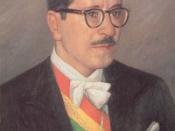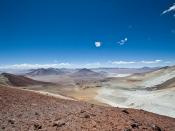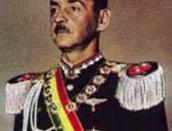Civilization in the Bolivian Andes is thought to stretch back some 21,000 years. The most influential Pre-Columbian cultures were the Tiahuanaco, who were based around Lake Titicaca and who ruled the region between 600-1200 AD, and the Incas, who headed a vast empire comprising most of Peru, Bolivia, Ecuador and northern Chile.
The Spanish conquest of the country began in 1531 under Francisco Pizarro. The conquistadors made rapid progress, exploiting the trust (and later the disunity) of the Indians to secure the territory that within two years became known as Alto Peru. In 1544, deposits of silver were discovered at PotosÃÂ. The wealth generated by this find underwrote the Spanish economy (and the extravagance of its monarchs) for more than two centuries. However, conditions for the mine workerswere appalling, with most of the enslaved Indians and Africans dying within a few years.
The process of achieving independence from the profligate Spanish administration finally came in the form of Simón Bolivar's lieutenant Antonio José de Sucre, in the battle of Ayacucho in 1824.
Bolivia was formally declared a republic the following year.
Bolivia's territory had always been coveted by its neighbors, encompassing as it did over 2 million square kilometers (780,000 sq mi). Chile's desire for more land first bore fruit in the War of the Pacific, which it fought with Bolivia between 1879 and 1884. Chile triumphed, securing 850km (527mi) of coastline and robbing Bolivia of the port of Antofagasta, leaving the country landlocked. Soon after, Peru, Brazil and Argentina also began hacking away at Bolivia's borders. In 1932, a border dispute with Paraguay in the Chaco region over oil deposits stripped Bolivia of further land. The ensuing Chaco War (1932-35) also served to foment civil unrest within the country, promulgating reformist associations and leading to a series of coups...


